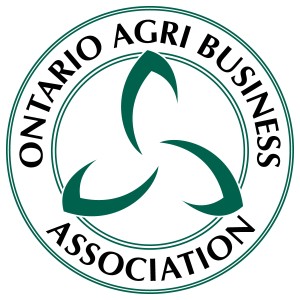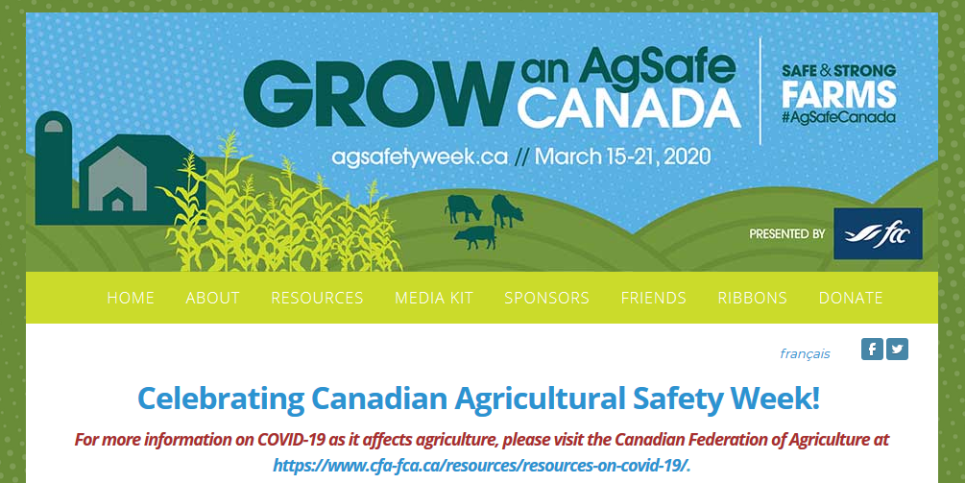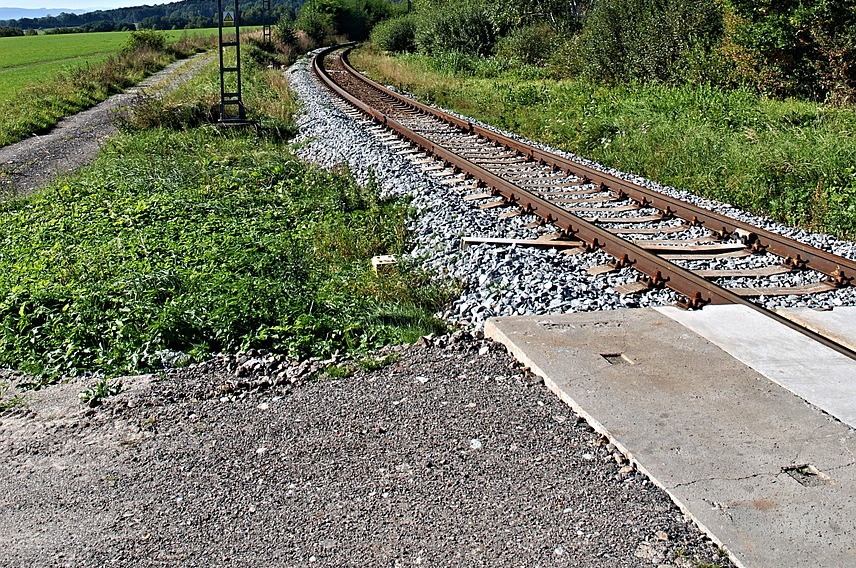Today we’re going to break down the 4 sections of the newly released Agribusiness Safety Poster that relates to farm railway crossings.
ACUTE Environmental and Safety offers high-quality workplace health and safety training including Agribusiness Safety Training. We are celebrating our 25th anniversary in 2020. Join the many thousands we have trained over the years. Register here today.
Now let’s take a closer look at each of the 4 sections to help keep you and your workers safe.

Learn about the new Agribusiness Safety Poster and how it can keep you safe
What Is the Agribusiness Safety Poster
The Canadian Agricultural Safety Week was held on March 15-21 this year. You can visit their website here to learn more about this year’s program. One of the focuses this year was on rail safety. As part of this celebration, a new Agribusiness Safety poster that talks about farm machinery and rail safety was released. Here’s a link to the new poster. Let’s take a closer look at each section and breakdown what they mean for you.
The most common types of farm machinery include:
- Tractors: very versatile piece of machinery, often used to haul other machinery behind it
- Sprayers: used for applying pesticides or herbicides; larger ones are pulled behind your tractor
- Plows: used for turning over your soil
- Cultivator: machine pulled behind your tractor for soil cultivation, weed control, and preparing seed beds.
- Wagon: used for moving hay
- Harrows: pulled behind your tractor to level the soil
The new Agribusiness Safety Poster was part of this year’s Canadian Agricultural Safety Week – Image Source: AgSafetyWeek.ca
Section 1: “Field to Field Yield to Trains”
The new Agribusiness Safety poster talks about how many times field and farmstead access roads in Canada will have railway crossings that are passive. This means that they won’t have any warning lights, bells, gates, or signs that clearly indicate that there is a railway crossing there.
For this reason it is vitally important that your farm machinery operators are aware of all of these crossings and that when you approach one you need to:
1. Stop Driving: Come to a complete stop and don’t proceed over the railway line.
2. Look Both Ways: Take a good look both ways down the railway line to make sure that no train is approaching.
3. Listen Carefully: Listen carefully for an oncoming train. This may be difficult if your farm machinery is loud.
Remember that your farm machinery is probably much slower than a smaller type of vehicle, so you need to account for the amount of time that it is going to take you to completely cross and clear the tracks. Leave yourself plenty of time. If there is a train coming in the distance, it’s better to be safe and wait the extra time than to try and beat it across.
Agribusiness Safety Poster: Most farm crossings are passive and have no markings
Section 2: “Stop Safely at All Farm Crossings”
The second section of the Agribusiness Safety Poster deals with safe stopping distances. When you come to a railway crossing, you should stop your farm machinery “no closer than 5 metres from the nearest railway track.” Once you are completely stopped you should take a close look in each direction remembering to move your head and eyes so that you can properly see around any obstructions that might be blocking your view such as your windshield, your mirrors, any pillars on your vehicle, or anything else that might be in your way.
Remember that when you see a train coming in the distance, it will look like it is traveling much slower and is much further away than it actually is. That is because of the train’s size. It can be misleading. If you see a train in the distance, it is much safer to wait where you are until it passes than to take a chance and risk injury or death. The few minutes of extra time that you spend waiting is definitely worth you safety.
Agribusiness Safety Poster: Stop 5 metres before the railway track
Section 3: “Is It Safe to Go?”
Accrding to the next section of the Agribusiness Safety Poster, before you cross over a railway track you want to ask the following questions:
Do You Have Enough Room?: Take a look at the other side of the crossing to make sure that there is enough room for your machinery to cross over and be completely clear of the tracks without you having to stop.
You don’t want any part of your machinery or anything that you are towing to sit on the tracks for any length of time. If there is something that is preventing you from crossing without stopping, you need to rectify that before you attempt to go across.
Is What You Are Towing Securely Hitched?: If you are towing a trailer or other type of machinery, make sure that it is securely hitched and that going over the bumpy railway crossing won’t jar it loose.
Is Your Cargo Secure? Make sure that anything that you are carrying is properly secured and won’t fall off during the crossing. As you are making the crossing watch to see that nothing falls off and onto the tracks. If something does fall off the tracks, you will need to remove it so that it doesn’t present a threat to any oncoming trains.
Agribusiness Safety Poster: Can you cross without stopping?
Section 4: “Know Your Equipment”
The fourth and final section of the Agribusiness Safety poster talks about understanding your machinery’s capabilities as they relate to safe railway crossings. Remember that not all farm machinery travels well over farm railway crossings.
If you are operating a low-slung machine, which means that it is very low to the ground, you should not try to make it over a railway crossing. This is because the machinery may “become lodged on the crossings” and you won’t be able to move it.
Agribusiness Safety Poster: Make sure your machinery is high enough to clear the tracks
Are You an OABA Member? Contact ACUTE for Training
If you are a member of the Ontario Agri Business Association (OABA) then you can contact ACUTE Environmental & Safety Services to provide you with the training that you need to meet your obligations set out in federal and provincial health and safety legislation.
The OABA has partnered with ACUTE to give its member access to the expanded resources and training services that ACUTE can provide you to ensure your success with the health and safety compliance programs.
To book safety services including training, inspection, audit, and consulting, you can contact ACUTE Environmental & Safety Services either:
By Phone: 519-747-5075 or
By Email: info@acuteservices.com
Would you like to hold staff safety training at your own location? Click here to learn more.

How ACUTE Can Help with Training
ACUTE offers a wide range of training courses that you can either take at our Waterloo, Ontario training facility or we can come to your location and provide the training you require.
The following is a list of some of the training courses that we provide, however if you prefer, we can also develop customized training for you that is based on your particular needs as an OABA.
Confined Space Entry-(attendant/entrant 8 hours)
Confined Space Rescue-(non-entry/entry 8 hours)
Working at Heights-(8 hours)
Elevated Work Platform-(scissor/boom 8 hours)
Forklift-(8 hours)
Telehandler-(8 hours)
Overhead Crane-(8hrs)
Spill Response-(8 hours)
Transportation of Dangerous Goods-(8 hours)
Lockout/Tagout Awareness-(4 hours)
Personnel Protective Equipment-(PPE4hours)
Canada Labour Code Part 2-(4 hours)
Supervisory Due Diligence-(4hours)
Machine Guarding Safety-(4 hours)
Occupational Health & Safety Act & Regulations-(4hours)
Confined Space for Management (never go into confined space – 4hrs)
WHMIS 2015 GHS-(2 hours)
Our safety training sessions include both in-class theory and practical hands-on training. We will also supply you with the training guide, quiz, various visual aids, certificates of training, and wallet cards.
You Can Trust ACUTE for the Best Agribusiness Safety Training
ACUTE’s experienced team members have been serving safety professionals for over 20 years. You can trust ACUTE for hands-on, practical Agribusiness safety training to keep your employees safe. ACUTE is dedicated to workplace safety and understands the importance of course and training provider approval. Why get workplace safety training with ACUTE? Here are just some of the benefits of working with ACUTE.

- Open Door Instructor-Student Partnership – ACUTE’s training services emphasize client participation. Staff foster relationships with clients and serve as a touchstone for advice anytime moving forward.
- Serving Your Team and Industry – With a vast array of clients in manufacturing, construction, health, academic, and government sectors, ACUTE brings the best safety practices from across the spectrum to your workplace.
- 100 Years Combined Experience – ACUTE provides comprehensive health and safety training, on-site safety services, and consulting services. With over 100 years of combined experience, our company staff offer more than theoretical or abstract ideas. ACUTE offers solutions.
- Track Record of Success – ACUTE is rated 4.9/5 stars on Google reviews, demonstrating a commitment to our clients, quality, and passion for training.
“Great experience! Training is well presented and engaging! Trainers are extremely well informed with lots of real life experience!”






